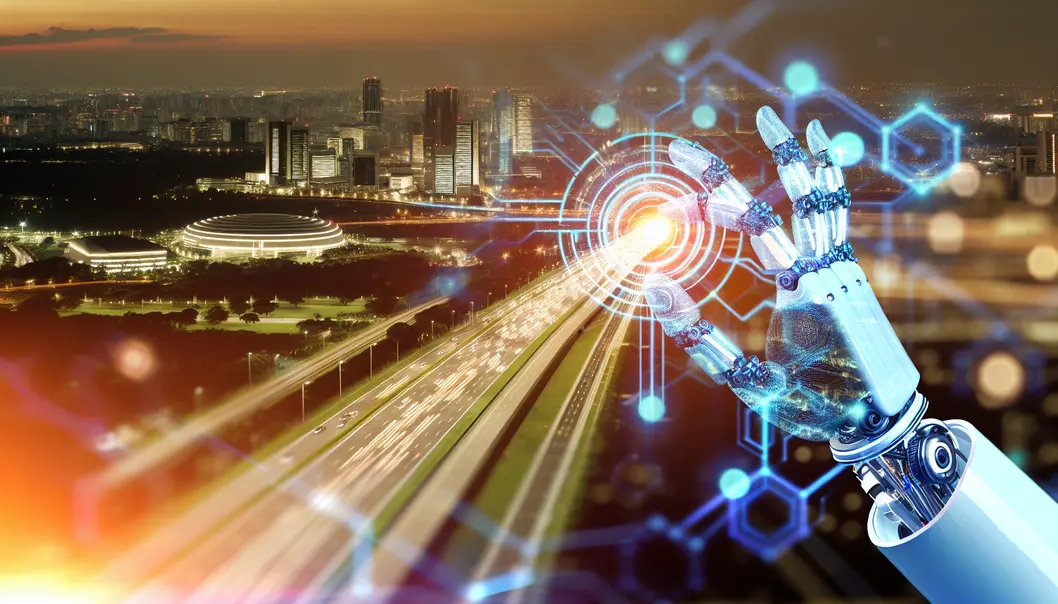The year 2024 marks a pivotal era in artificial intelligence, characterized by significant advancements that redefine business strategies and operations. As AI becomes an integral tool in diverse sectors, Chief Technology Officers are at the forefront of navigating these changes. This article delves into the key advancements in AI for 2024, offering strategic insights for CTOs to harness these innovations effectively, ensuring their organizations remain competitive and innovative.
The AI-Driven Hyperautomation Paradigm: Transforming Industry Frontiers in 2024

In 2024, artificial intelligence’s role in driving hyperautomation has emerged as a revolutionary force across various industries. The concept of hyperautomation encompasses the comprehensive automation of business processes by integrating multiple technologies, primarily centered around AI, machine learning (ML), and robotic process automation (RPA). As organizations seek to streamline operations and boost productivity, hyperautomation presents a transformative approach, pushing beyond the automation of repetitive tasks to encompass decision-making and complex data analysis. This shift not only liberates human resources but also enhances operational accuracy and performance.
The Core Pillars of Hyperautomation
At the heart of hyperautomation lies AI and ML, which equip systems with the ability to learn and self-improve from data, facilitating autonomous decision-making capabilities. These technologies extend automation’s reach, enabling the handling of intricate processes previously reliant on human insight. Complementing AI and ML, RPA automates mundane, repetitive tasks, allowing human workers to shift focus toward strategic initiatives. The synergy of these technologies creates an environment where businesses can pursue innovation without the bounds of manual processes.
Integration Platforms as a Service (iPaaS) plays a crucial role in this ecosystem by seamlessly linking disparate systems and applications. This connectivity enables real-time data exchanges and fosters efficient process execution across an organization. With these systems, companies can ensure smooth operations across varying departments and functions, ensuring that information flow is uninterrupted and effective.
Benefits and Outcomes of Hyperautomation
The implications of hyperautomation for businesses are profound, presenting numerous benefits in terms of efficiency, accuracy, and resource management. By automating complex tasks, companies often achieve operational cost reductions of up to 30%, significantly boosting productivity. The minimization of human error enhances process accuracy, leading to faster cycle times and improved customer satisfaction. Employees are thus empowered to concentrate on high-value tasks, fostering a more engaged and innovative workforce.
In addition to operational improvements, hyperautomation significantly elevates customer experiences. Automated systems, such as chatbots, provide quicker responses and facilitate personalized interactions, enhancing client satisfaction and loyalty. This capability does not only retain customers but also positions businesses as adaptive and service-oriented in an increasingly competitive market.
Diverse Applications Across Industries
Industries such as manufacturing have capitalized on hyperautomation by evolving into smart factories. Here, AI drives automation in predictive maintenance and real-time quality control, allowing factories to autonomously adjust to demand shifts. In supply chain management, AI optimizes logistics and inventory, offering robust solutions against disruptions.
In the financial sector, hyperautomation has transformed operations in banking and insurance through automated claims processing and enhanced fraud detection. AI’s analytical capabilities allow for quicker, more reliable fraud identification, safeguarding assets and customer trust.
The healthcare industry, too, benefits markedly from AI-driven hyperautomation. AI agents improve diagnostic accuracy and manage administrative tasks, streamlining operations and personalizing patient care. This integration not only enhances healthcare delivery but also democratizes access to personalized treatment options.
Anticipating Future Trends
As 2024 progresses, hyperautomation’s potential is only beginning to unfold. By 2026, the adoption of low-code and no-code technologies is expected to accelerate, simplifying the automation journey even further. The integration of advanced AI agents will continue to redefine workflow automation, making businesses increasingly agile and responsive to market changes.
AI-driven hyperautomation stands not just as a technological advancement but as a pivotal enabler of business transformation. By reducing complexity and promoting an agile infrastructure, it is poised to redefine industry standards. For organizations aiming to maintain a competitive edge, embracing hyperautomation is not merely advantageous but imperative. As industries continue to integrate these transformative technologies, the frontier of what is possible extends exponentially, heralding a new era of industrial innovation.
Final thoughts
In conclusion, 2024 has emerged as a beacon of innovation in the AI landscape, offering CTOs unparalleled opportunities to integrate advanced AI solutions into their strategic framework. By capitalizing on these technological advancements, organizations can achieve operational excellence and remain at the cutting edge of their industries. As AI continues to evolve, staying informed and adaptable will be crucial for sustained success.
Would you like to know how to Transform Your Organisation with AI Mechanised Hyperautomation?
Learn more: https://docextractor.com/contact-us/
About us
At DocExtractor, we leverage advanced AI and machine learning technologies in building tailored solutions to bring automation and intelligence in your operations. Each tool reflects our mission to make AI both accessible and impactful.


Leave a Reply